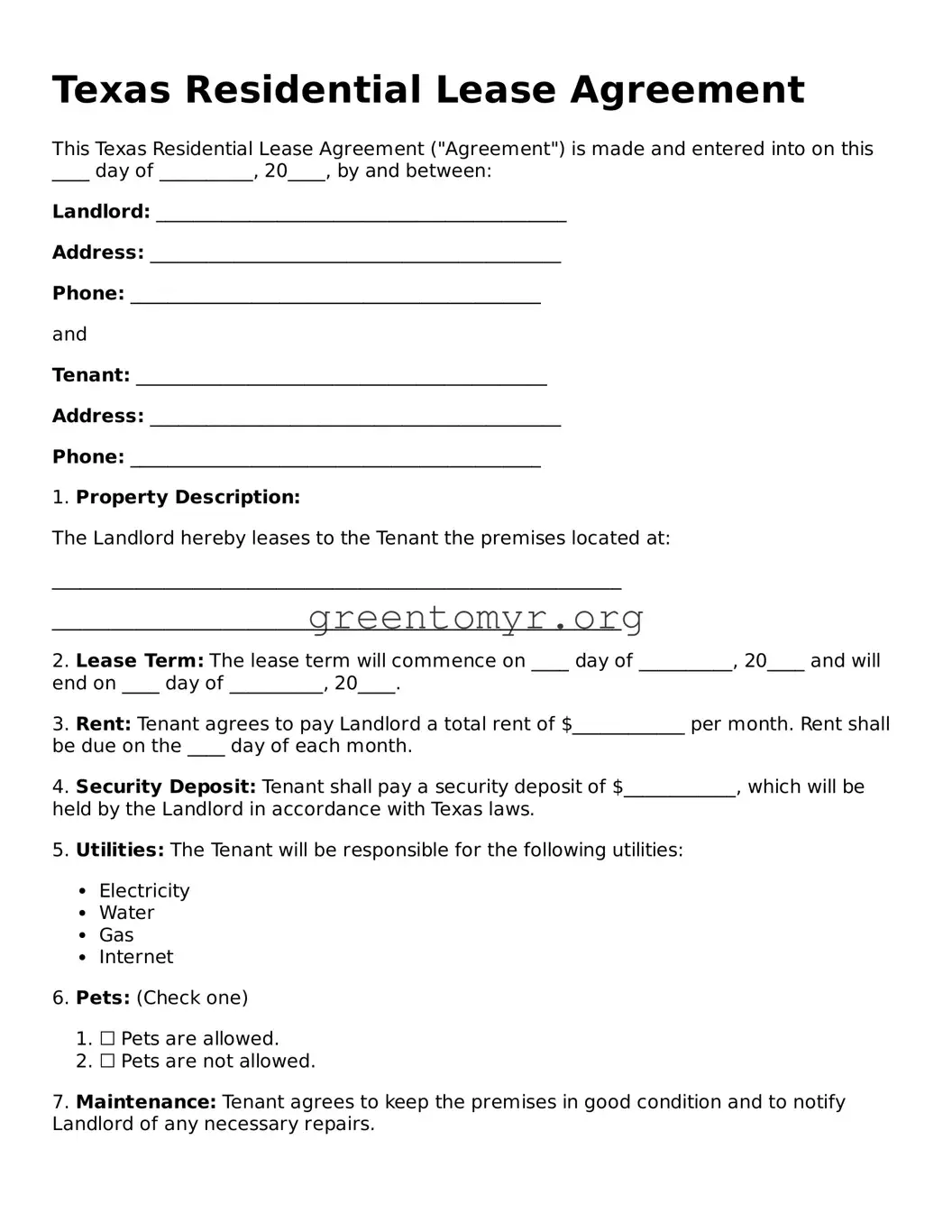Texas Residential Lease Agreement
This Texas Residential Lease Agreement ("Agreement") is made and entered into on this ____ day of __________, 20____, by and between:
Landlord: ____________________________________________
Address: ____________________________________________
Phone: ____________________________________________
and
Tenant: ____________________________________________
Address: ____________________________________________
Phone: ____________________________________________
1. Property Description:
The Landlord hereby leases to the Tenant the premises located at:
_____________________________________________________________
_____________________________________________________________
2. Lease Term: The lease term will commence on ____ day of __________, 20____ and will end on ____ day of __________, 20____.
3. Rent: Tenant agrees to pay Landlord a total rent of $____________ per month. Rent shall be due on the ____ day of each month.
4. Security Deposit: Tenant shall pay a security deposit of $____________, which will be held by the Landlord in accordance with Texas laws.
5. Utilities: The Tenant will be responsible for the following utilities:
- Electricity
- Water
- Gas
- Internet
6. Pets: (Check one)
- ☐ Pets are allowed.
- ☐ Pets are not allowed.
7. Maintenance: Tenant agrees to keep the premises in good condition and to notify Landlord of any necessary repairs.
8. Termination: This Agreement may be terminated by either party by providing____ days written notice prior to the expiration of the lease term.
9. Governing Law: This Agreement shall be governed by the laws of the State of Texas.
In witness whereof, the parties hereto have executed this Agreement as of the day and year first above written.
Landlord Signature: ___________________________ Date: _______________
Tenant Signature: ____________________________ Date: _______________
